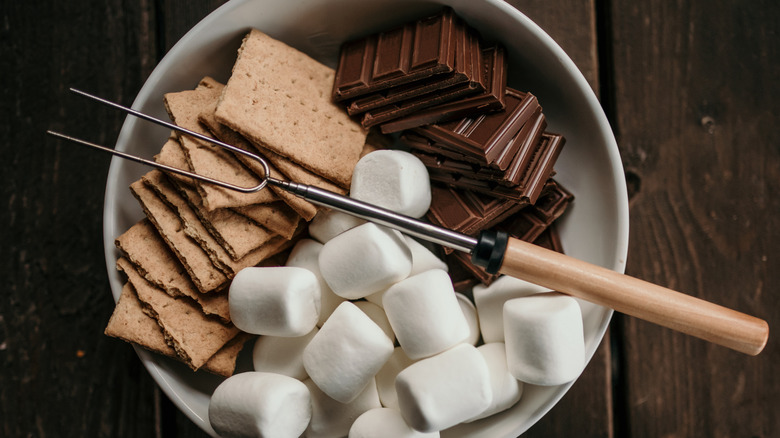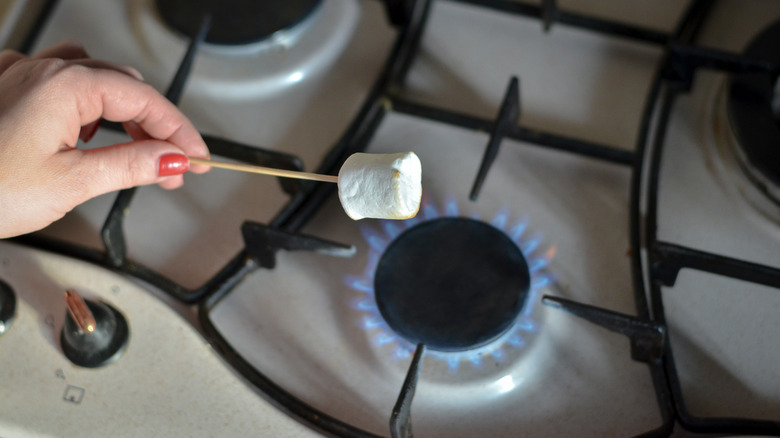Can You Roast Marshmallows On A Propane Stove?
Once upon a time, an evening around the campfire might end with a singalong, a ghost story or two, and of course, everybody's favorite outdoor dessert, the s'more. The practice of singing songs and telling stories around the fire may be fading into oblivion, but melted chocolate and marshmallows will never go out of fashion.
Even without the campfire, you can cook marshmallows over a charcoal grill — but can you cook them over one that runs on propane, or over a propane-powered portable camping stove? What about a propane fire ring? The answer to all of these is yes, it should be okay to do so, as long as you're willing to clean up any messy marshmallow goop that sticks to your propane-cooking equipment.
One concern folks may have about cooking over propane is that the marshmallows may take on a chemical taste. If your equipment is functioning properly, this shouldn't be an issue since propane itself is both odorless and flavorless. While your marshmallows may not have the smoky flavor that comes from a real wood fire, they shouldn't taste of gas, either. If your equipment is malfunctioning, though, there's a chance that the marshmallows may pick up some "off" flavors from chemicals added to the propane. In that case, you'll want to have a backup dessert on standby — may we suggest this tasty s'mores dip recipe?
Can you cook marshmallows on a gas stove indoors?
Sometimes, outdoor adventures just aren't in the cards, which is why toasted marshmallows have been adapted into less messy options like oven-baked s'mores and slow cooker s'mores. Still, kids shouldn't have to miss out on all the fun of incinerating their own marshmallows, even if they live where it's neither safe nor permissible to build a fire outdoors. In these cases, would it be okay for them to practice the fine art of toasting marshmallow on an indoor range?
Yes, it's possible to toast marshmallows on the stovetop, whether it runs on propane, natural gas, or even electricity. (An induction cooktop won't work, though, since marshmallows aren't magnetic.) If your burners are gas- or propane-powered, turn the flame to high and wait until it burns steadily, then skewer your marshmallow and hold it near (but not in) the flames. Turn it so it cooks evenly, then snatch it away from the fire before it starts dripping — otherwise, you'll have a major mess to clean up. You can also do the same thing over an electric stove, but you'll first need to wait until the burner is glowing red. Again, watch those drips, especially if your stove is a coil-top since these can be a pain to scrub.
If your marshmallow does drip, turn off the burner asap, then eat your partially cooked marshmallow while waiting for the stove to cool down. Don't keep cooking over a dirty burner since, even though marshmallows aren't greasy, any stovetop spill can be a potential fire hazard.

